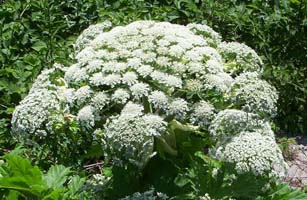
Parsnip rash – also called phytophotodermatitis (PPD) – is a skin condition caused by contact with juice or sap from a causative plant (such as parsnip, celery, lime juice), from which the condition gets its common name.
The combination of plant chemicals and ultraviolet (UV) light leads to a skin reaction, which can range from mild redness and irritation to severe blistering and peeling. Vegetable pickers, gardeners and even bartenders (as lime juice can also cause PPD) are at risk.
Causative plants contain compounds (furanocoumarins) which may cause skin irritation in some people and make the skin very sensitive to sunlight (UVA). This can lead to severe burning. Parsnip rash can also occur after eating large amounts of furocoumarin-containing foods.
Symptoms
- Rash.
- Skin blistering.
- Skin discolouring (dark red, purple or brown) which may last for several years.
Treatment
The rash will usually clear up without treatment if you avoid contact with the plant that caused it. Treatment options include:
- Wash the affected area and cover the rash with a cool, wet cloth or bandage to reduce swelling.
- Steroid creams can be used sparingly (see your doctor or pharmacist) if the rash is severe.
- Protect the affected area from sunlight with clothing, gloves and footwear.
- Topical antiseptics can be used to help prevent infection.
Prevention
- Avoid skin contact and ingestion of large amounts of plants likely to cause parsnip rash (phytophotodermatitis).
- If you come into contact with plants likely to cause parsnip rash, wash the area and cover the skin immediately to prevent contact with sunlight.
- If you need to pull up parsnip, or other plants that may cause problems, wear gloves and a long sleeved shirt.
Fast facts:
- Parsnip rash – also called phytophotodermatitis (PPD) – is a skin condition caused by contact or ingestion with certain plants.
- Parsnip rash can cause painful blistering and long-lasting skin discolouration.
- If you come into contact with plants likely to cause parsnip rash, wash the area and cover the skin immediately.
References used for this topic
More information:
DermNET
Phytophotodermatitis
Research & reviews:
Royal Australian College of General Practitioners: Australian Family Physician
Skin Rash on the upper limbs – Case Studies (2013)
Mandalia MR, Chalmers R, Schreuder FB. Contact with fig tree sap: an unusual cause of burn injury. Burns. 2008 Aug;34(5):719-21. doi: 10.1016/j.burns.2007.03.026. Epub 2007 Sep 7. PMID: 17825992.
Redgrave, N.; Solomon, J. Severe Phytophotodermatitis from Fig Sap: A Little Known Phenomenon. BMJ Case Rep. 2021, 14, e238745.
|
|